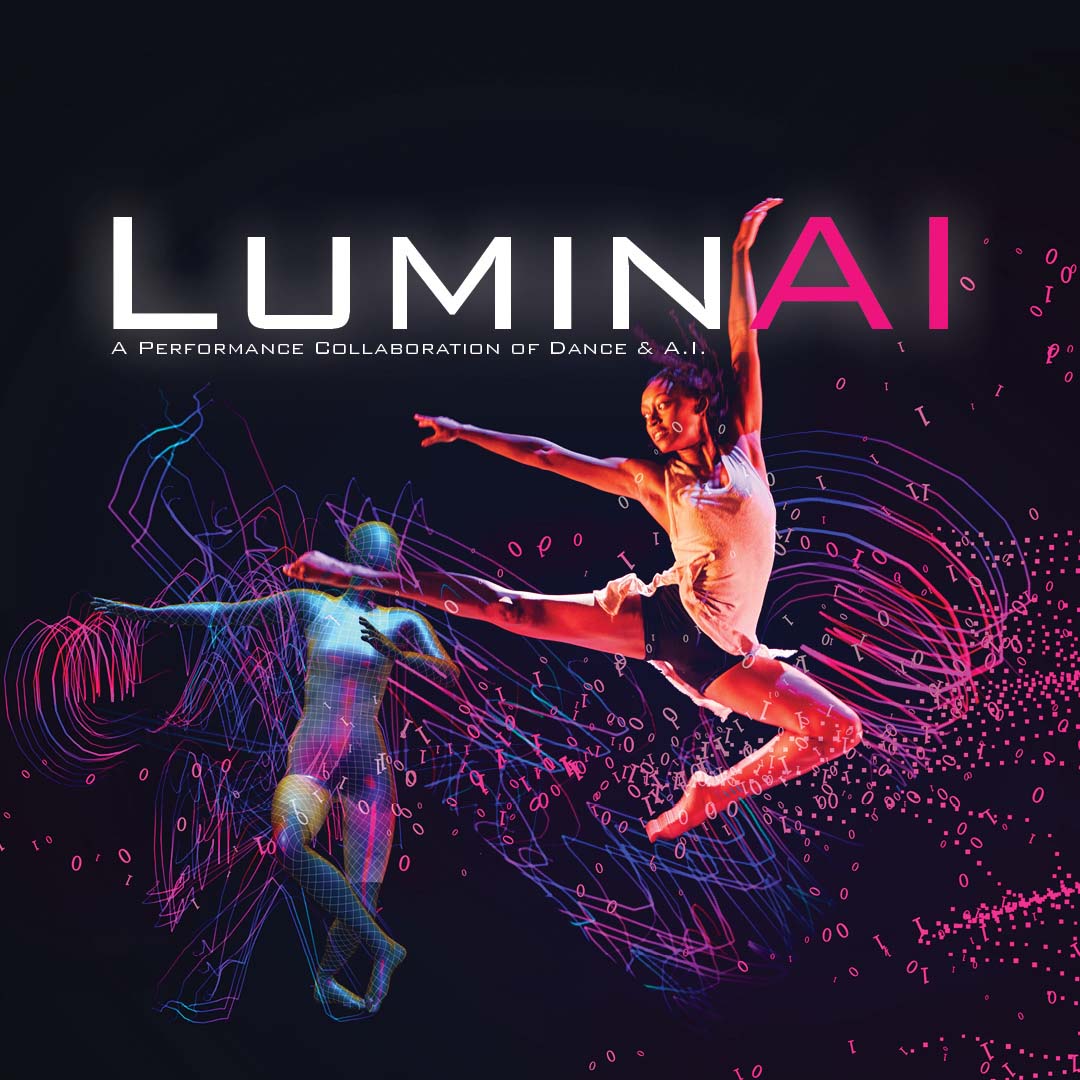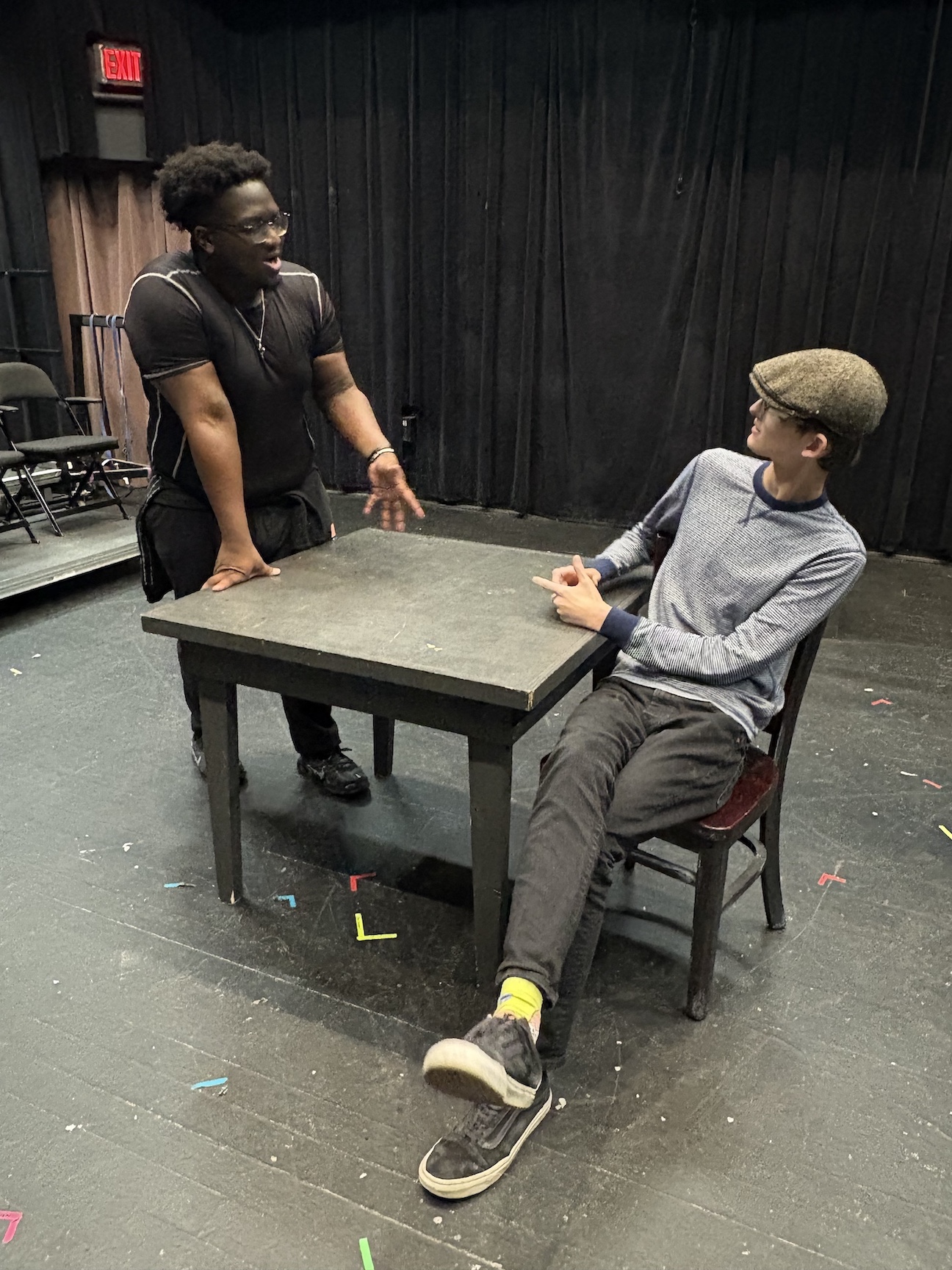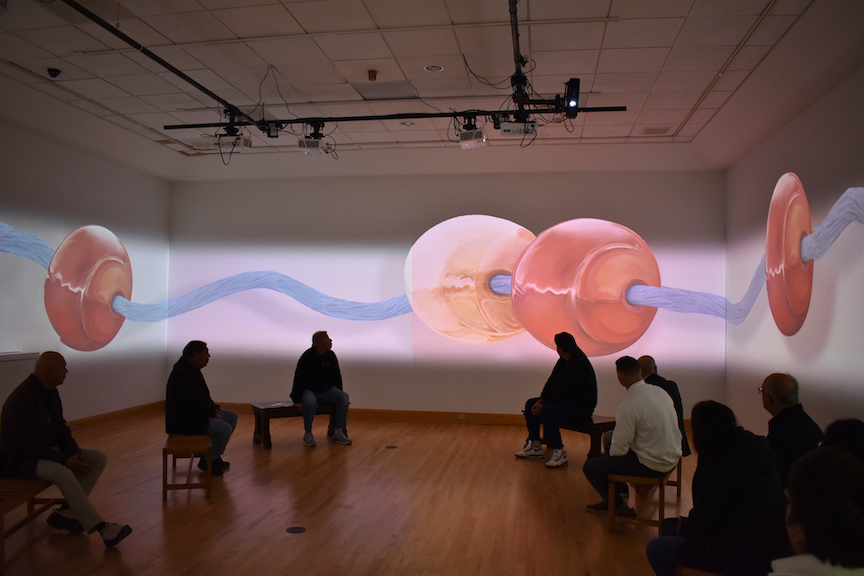

KENNESAW, Ga. | Apr 16, 2024
KSU, Georgia Tech combine forces in world’s first human/AI improvised dance performance
Kennesaw State University Department of Dance, in collaboration with Georgia Institute of Technology, will present “LuminAI: A Performance Collaboration of Dance and AI” on Friday, May 3, at 8 p.m. The free performance is the first time that artificial intelligence—in the form of an avatar projected onto a screen—will improvise movement with human dance partners.

Magerko, who heads the Expressive Machinery Lab at GT, explains that the avatar (a.k.a. agent) learns how to dance by dancing with humans.
Using complex open pose software, the agent first segments users’ motion into gestures. After learning the gestures, the agent reasons about them using two different kinds of learning knowledge. The agent then uses this new knowledge to choose a relevant response to display or, in this case, to perform. In essence, the avatar is improvising alongside the human dancer. In real time, the avatar reacts and plays off human movements to determine its own movements.
Knowlton, Associate Professor of Dance at KSU, says that some of the results have been unexpected and, occasionally, even funny. “Sometimes, the agent responses to the human are not exactly what you would expect—because it isn’t a human—so it can bring elements of surprise and humor. The avatar is full of color in its design, and sometimes motion trails linger from its limbs,” she explains. While some students took to the task right away, a few others had to warm up to the idea of dancing with a machine.
They had plenty of time to do so, though: Knowlton brought the software into the spring Dance Improvisation class. Students then helped train the avatar; it was an interesting way to create improvisational material.
After extensive training, the avatar becomes a digital partner who can respond to human movement with its own artificially intelligent power. “In this performance, we are using AI to respond to human movement, and actually co-create together, in the moment,” emphasizes Knowlton.
The line between human and non-human is blurred in this unique performance. Researchers hope that it will spur participants to examine their relationships with AI-based technology and how it can be expressive, social, and playful.
“LuminAI: A Collaborative Performance of Dance and AI” will premiere on Friday, May 3, 8 p.m., at the KSU Dance Theater on the Marietta campus. Tickets are not required for this free event, but seats are first come, first serve.
--Kathie Beckett

Bailey School of Music Rings in the Holiday Season with Two Festive Concerts

Faculty Collaboration Brings Original Play "Broken" to Life in the Classroom

KSU Animation Students Bring Seneca Artist's Work to Life in Immersive Installation

Summit Piano Trio to Make Weill Recital Hall at Carnegie Hall Debut